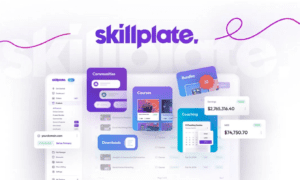Any digital marketing agency working today understands one thing clearly: mobile is not an add-on. It’s where customers mostly make decisions. People browse through advertisements, read reviews, tap on product pages, and browse through checkouts with the palm of their hands. Sometimes it happens on the way to work, between coffee breaks, or while multitasking on the couch.
The effect of mobile technology has changed the way people behave online. That change completely reorganizes the way marketing content is written, delivered, and how fast it needs to perform.
Mobile Is a Behavior Shift
Mobile is not a smaller screen version of the desktop. It generates new expectations from users, reduced attention span, and more contextual usage. A phone browser will not slow down to read dense blocks of copy or struggle with a convoluted page structure. Fast-moving, skimming rather than reading, making instantaneous decisions on clarity and flow.
This shift changes the organization of marketing. Content needs to be timely, compelling, and relevant. Calls to action need to be obvious. Headlines need to strike in the first few words. Absolutely nothing should feel concealed.
Speed Determines First Impressions
Mobile load time will determine if a user stays or bounces. If an asset loads too slowly or the page freezes, the opportunity is wasted. Campaigns are damaged not because of creative problems, but because users never even have a chance to see what was created.
Performance speed gets noticed. A quickly responding page is viewed as fresh and reliable by the user. It translates over to how people perceive the brand on a whole. It sets a tone that influences conversion long before words are ever seen. User Experience Is No Longer Optional
Clean, uncluttered design was nice to have in the past. Now it governs performance. Smartphone users expect all to be obvious and seamless. Buttons must be tappable, menus must be light, and interactions must be smooth.
Small design decisions affect behavior. Messy layout confuses. A single extra field on a form can lead to abandonment. Individuals do not wait, zoom, or debug. They bail.
Good UX equals better marketing performance. Bounce rate, time on page, scroll depth—it all measures how well the experience matches user intent.
Mobile Video Has Changed How Stories Are Told
Video used to be an afterthought in many campaigns. Mobile flipped that entirely. Now, video content drives top-of-funnel attention, carries product messaging, and even replaces traditional landing pages in some funnels.
Short videos with clear visual structure and fast pacing perform best. People often watch with sound off, so visuals and subtitles have to do the heavy lifting. The story needs to begin within the first few seconds and deliver value before the viewer scrolls past.
This change has influenced how brands write scripts, structure ads, and plan product launches. Visual clarity and speed matter more than ever.
Data Collection Must Respect Mobile Behavior
Long forms and complicated sign-up flows do not work on mobile. Users expect simplicity. Anything that feels like effort gets ignored.
Modern campaigns rely on minimal input fields, pre-filled data where possible, and smart integrations that speed up the process. Social logins, tap-to-apply features, and simplified checkout flows have become the standard.
Collecting data should feel seamless. If it interrupts the flow, users will move on before submitting anything.
Push and Messaging Now Compete with Email
Push notifications and in-app messages have created new ways to re-engage users. On mobile, these formats feel more immediate than email. They appear directly on the lock screen, often within minutes of a key user action.
The timing and content of these messages matters. A reminder sent too late gets ignored. A notification without context feels intrusive. But when done correctly, they can drive faster conversions, revive abandoned carts, or prompt a return visit at the right time.
Push messaging has become part of the mobile marketing toolkit. It requires the same level of thought as an email campaign, but operates on a tighter window and higher level of user sensitivity.
Mobile Search Behavior Looks Different
Search habits evolved in a mobile-first environment. The queries are brief, location-driven, or immediate questions. People aren’t browsing aimlessly. They’re looking for quick answers.
This influences everything from keyword targeting to metadata writing. Page titles have to be accurate. Descriptions must accurately represent the value of the page. The content itself must provide the answer without requiring the user to scroll too far or decipher airy assertions.
Well-performing pages on mobile are typically simple, visual, and action-oriented. Clean design and quick performance go together with search visibility.
Multi-Session Tours Are The Norm
Mobile usage is fragmented. A person will start exploring a product on his phone, come back later on a laptop, and finish buying it on a tablet. His focus shifts during the course of the day, between devices and platforms.
This creates a problem for marketers. Campaigns must be continuous through touchpoints, and user sessions must be continuous. When a consumer has to re-enter data or begin over from scratch, the moment is gone.
Good mobile strategies account for this. Retargeting, saved state, and consistent creative help to provide continuity between first contact and final conversion.
Mobile Has Altered the Rules
Mobile technology has completely transformed how people are interacting with brands. Attention is faster. Anticipation is stronger. Loyalty depends on clarity, speed, and consistency.
Any online marketing agency operating in this industry has to design campaigns with mobile behavior at the center of every decision. The tools, channels, and content forms will keep on evolving. The challenge is keeping the experience easy, responsive, and founded on the way people actually use their devices.
That’s the strategy that wins.



































